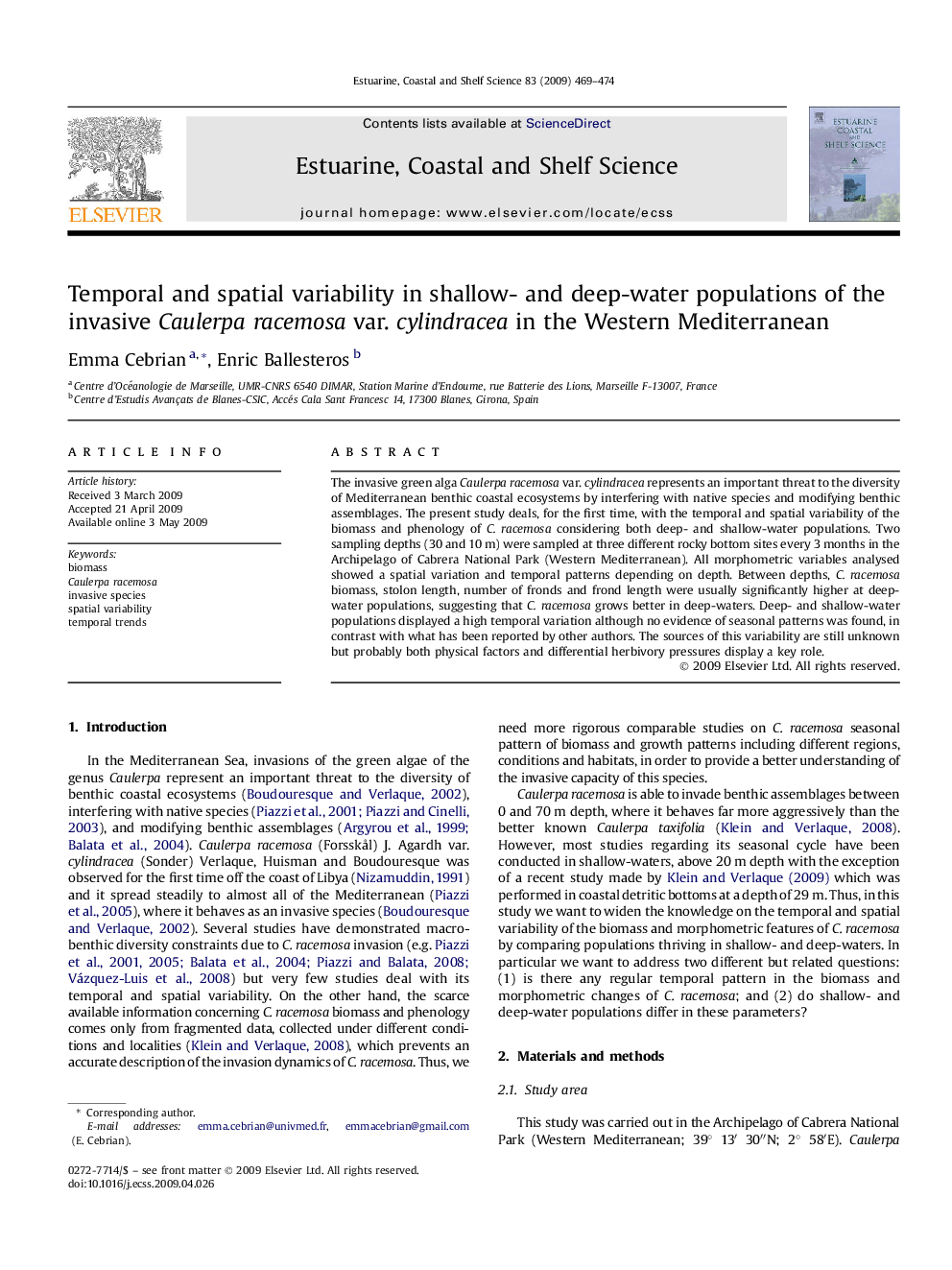| Article ID | Journal | Published Year | Pages | File Type |
|---|---|---|---|---|
| 4540848 | Estuarine, Coastal and Shelf Science | 2009 | 6 Pages |
The invasive green alga Caulerpa racemosa var. cylindracea represents an important threat to the diversity of Mediterranean benthic coastal ecosystems by interfering with native species and modifying benthic assemblages. The present study deals, for the first time, with the temporal and spatial variability of the biomass and phenology of C. racemosa considering both deep- and shallow-water populations. Two sampling depths (30 and 10 m) were sampled at three different rocky bottom sites every 3 months in the Archipelago of Cabrera National Park (Western Mediterranean). All morphometric variables analysed showed a spatial variation and temporal patterns depending on depth. Between depths, C. racemosa biomass, stolon length, number of fronds and frond length were usually significantly higher at deep-water populations, suggesting that C. racemosa grows better in deep-waters. Deep- and shallow-water populations displayed a high temporal variation although no evidence of seasonal patterns was found, in contrast with what has been reported by other authors. The sources of this variability are still unknown but probably both physical factors and differential herbivory pressures display a key role.
